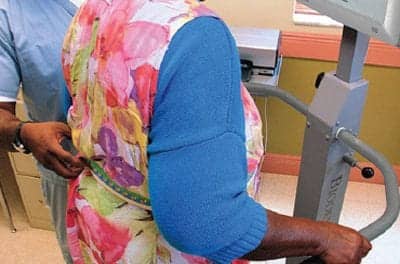Researchers propose a new diagnostic testing method for Parkinson’s disease that involves computer keystroke time rather than gait and balance.
Nearly all diagnostic testing for Parkinson’s revolves around how a patient moves and requires the patient to walk for extensive distances and amounts of time. The discomfort caused to patients by this kind of testing is unacceptable, according to the researchers based in Saudi Arabia and Sweden.
Their method is a new kind of computational analysis based on less physically demanding testing. Instead, it is based on computer keystroke time, according to their study in IEEE/CAA Journal of Automatica Sinica, a joint publication of the Institute of Electrical and Electronics Engineers (IEEE) and the Chinese Association of Automation (CAA).
“Apart from gait and balance data, the measurement of computer keystroke time series that contain information of the hold time occurring between pressing and releasing a key has been proposed for detecting early stages of Parkinson’s disease,” says Tuan D. Pham, study author and professor of biomedical engineering in the Center for Medical Image Science and Visualization at Linköping University in Sweden, in a media release from Chinese Association of Automation.
“Being similar to the motivation for determining the minimum number of strides for the analysis of gait dynamics, our study was interested in answering the question if there are methods that can process very short time series and achieve good results for differentiating healthy controls from subjects with early Parkinson’s disease.”
In this experiment, subjects press one or two buttons on a device such as an iPhone as fast as possible for a short period of time. Pham and the team took these data and analyzed them through fuzzy recurrence plots, which take multiple short-time series data points and translate them into a two-dimensional grey-scale images of texture.
“While having a very short length, the time series is augmented with a relatively large number of feature dimensions,” Pham adds. “The results obtained from the fuzzy recurrence plots are encouraging for the collection of practical data recorded from participants and their usage for the classification task.”
The team plans to further study the use of fuzzy recurrence plots and improve the algorithm to better determine a subject’s disease state. They also plan to extend the research to study gait dynamics of patients with Parkinson’s disease, Huntington’s disease, and amyotrophic lateral sclerosis, also known as Lou Gehrig’s disease, the release continues.
[Source(s): Chinese Association of Automation, EurekAlert]





